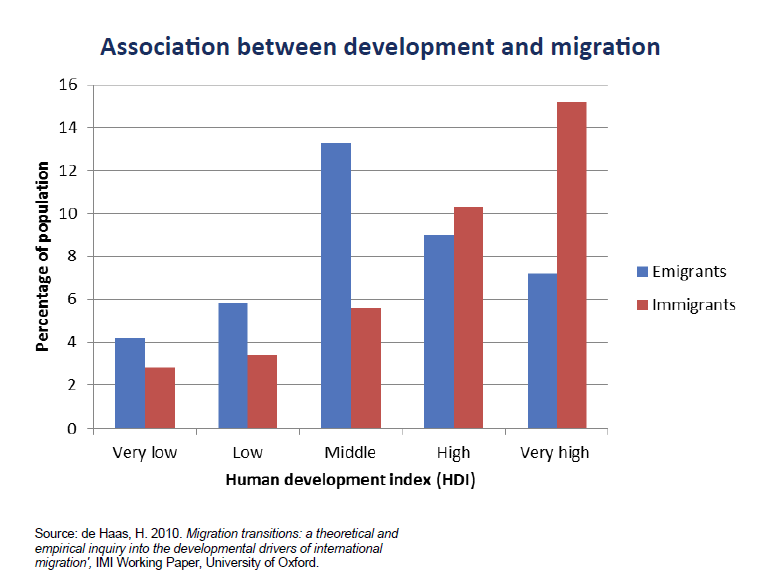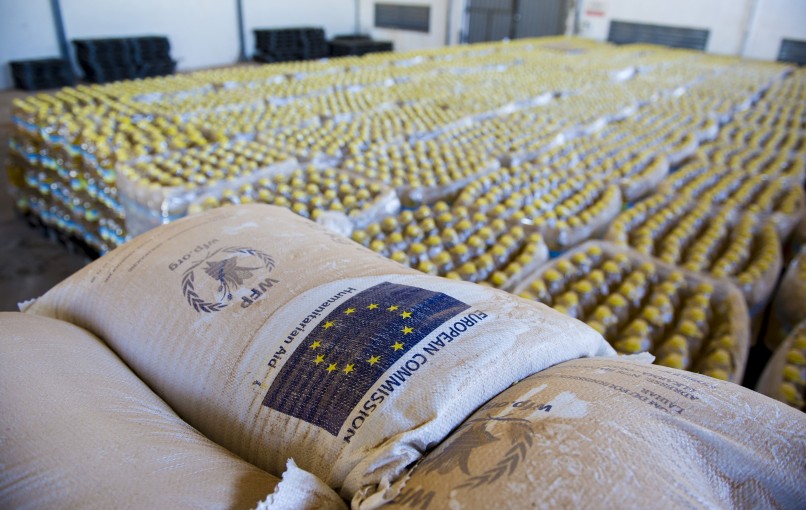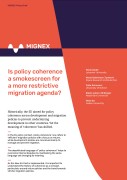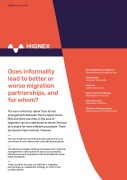MIGNEX Insight
Throwing development money at the ‘migration problem’ – is it completely misguided?
There is very little evidence that development aid and interventions affect migration decisions. The evidence we do have is mixed and often shows the opposite of the intended consequence. What does this mean for policy makers?
Addressing the ‘root causes of migration’ is popular in policy circles and has come again to the forefront of policy discussion and debates, particularly since the so-called ‘refugee crisis’ in Europe in 2014 and 2015. For this reason discussions about why people move strongly focus on poverty and a lack of development. To show that they are taking action, Europe (as well as other actors) have decided to throw money at the ‘problem’ by increasing development aid targeted at the ‘root causes of migration.’ The question that follows from this is: does development (aid) actually lead to a reduction in migration? Is the policy and programming that is being made backed up by evidence proving that this is indeed the right direction to go?
For this overarching question to be answered, we need to first ask three key sub-questions, which have also been addressed by Clemens & Postel (2018): What are development interventions? Do they work? Do they deter migration?
When discussing development aid and interventions, this can be investigated at both the macro and micro level. Many previous studies have focused on the macro-level looking at development aid spending while micro studies have generally focused on one specific program intervention.
What are development interventions?
Types of development interventions that are generally seen in this area include: social protection, social transfer in cash or in kind, employment creation, insurance, skills trainings, small and medium-size enterprise support, agricultural development, institution capacity building and more. The European Union Emergency Trust Fund for Africa focuses specifically on employment creation, basic local level service provision, migration management and migration governance.
Does (development) aid work?
For development aid to work, it must be targeted and effective (Gregl & Logozar, 2017). However, Clemens & Postel (2018) show that aid is not very good a spurring economic growth. They show that there is scepticism about the ability of development aid to seriously contribute to sustained growth or the ability of development aid to effect large changes in youth employment. There is also little evidence that aid helps to mitigate conflict.
Does development (aid) deter migration?
So finally, do development interventions influence emigration? In theory, aid could both increase migration and decrease migration through different channels. To answer this question, it makes sense to first step back and look at the evidence on the overall effect of development on migration.
At the macro level, De Haas (2010) clearly shows that at low levels of development emigration takes on an inverted U-shape, meaning that there are lows levels of emigration. As development increases, stocks of emigrants begin to rise until a tipping point, where the level of the stock of emigrants decreases but still does not come close to the level of less developed countries.

Similarly, studies by Clemens (2014), Dao et al (2018) and OECD (2017) all show that there does not seem to be much of a migration deterrent effect at a macro level until development reaches levels around $8000-10000 PPP GDP per capita.
Now shifting to the evidence on the effect of development aid, Berthélemy, Beuran and Maurel (2009), using World Bank bilateral data, found that an increase in total development aid was associated with an increase in general migration — and specifically promoted unskilled migration. Only bilateral aid both increased overall migration and skilled migration.
If we look more specifically, we see that different types of aid influence migration in different ways. According to Clemens and Postal (2018) we see that emigrant stocks fall with youth employment. Gamso & Yuldashev (2018) show that aid supporting rural development had a very small positive effect on the reduction of rural migration. Lanati & Theile (2018) find a negative relationship for both poor and more well off countries with regard to aid related improvements in public service but the bilateral link is still there. Lanati and Thiele (2018) also find that the effect differs by type of aid, whether it is delivered in the country or not. Gamso and Yuldashev (2018) look at aid to the social sector or governance aid and find a deterrent effect. Moullan (2013) found that health aid reduced the amount of health worker emigration.
At the micro-level, a review of social protection interventions by Hagen-Zanker and Himmelstein (2013) finds that there is no consensus in the literature. Interventions are being associated with both positive and negative effects on migration and the specific context also matters.
Conclusion
There is still much that we do not know with regard to how development aid and interventions affect migration decisions. However, there is a clear link between the influx of migrants (especially very visible irregular migration) and development spending in Europe (Knoll, 2017) as well as in other countries.
Key insights:
- In its current form development aid does not seem to be big enough to create the underlying changes that effect migration decisions
- In cases where we do see a deterrent effect of aid on migration, a noticeable impact would require an unrealistic increase in aid
- For poor countries, aid is often expected to increase migration
- The deterrent effect of aid only seems to be the case when higher level of income are achieved or with very specific types of aid in specific contexts
- More systematic research is needed breaking down different types of aid more at the macro level and looking at specific interventions and specific types of interventions at the micro-level
- There is little information on the effects of development (aid) on different types of migrations (i.e. regular vs. irregular)
Cite this publication
Siegel, Melissa. (2019) Throwing development money at the ‘migration problem’ – is it completely misguided? MIGNEX Insights. Oslo: Peace Research Institute Oslo. Available at: https://www.mignex.org/publications/throwing-development-money-migration-problem-it-completely-misguided




